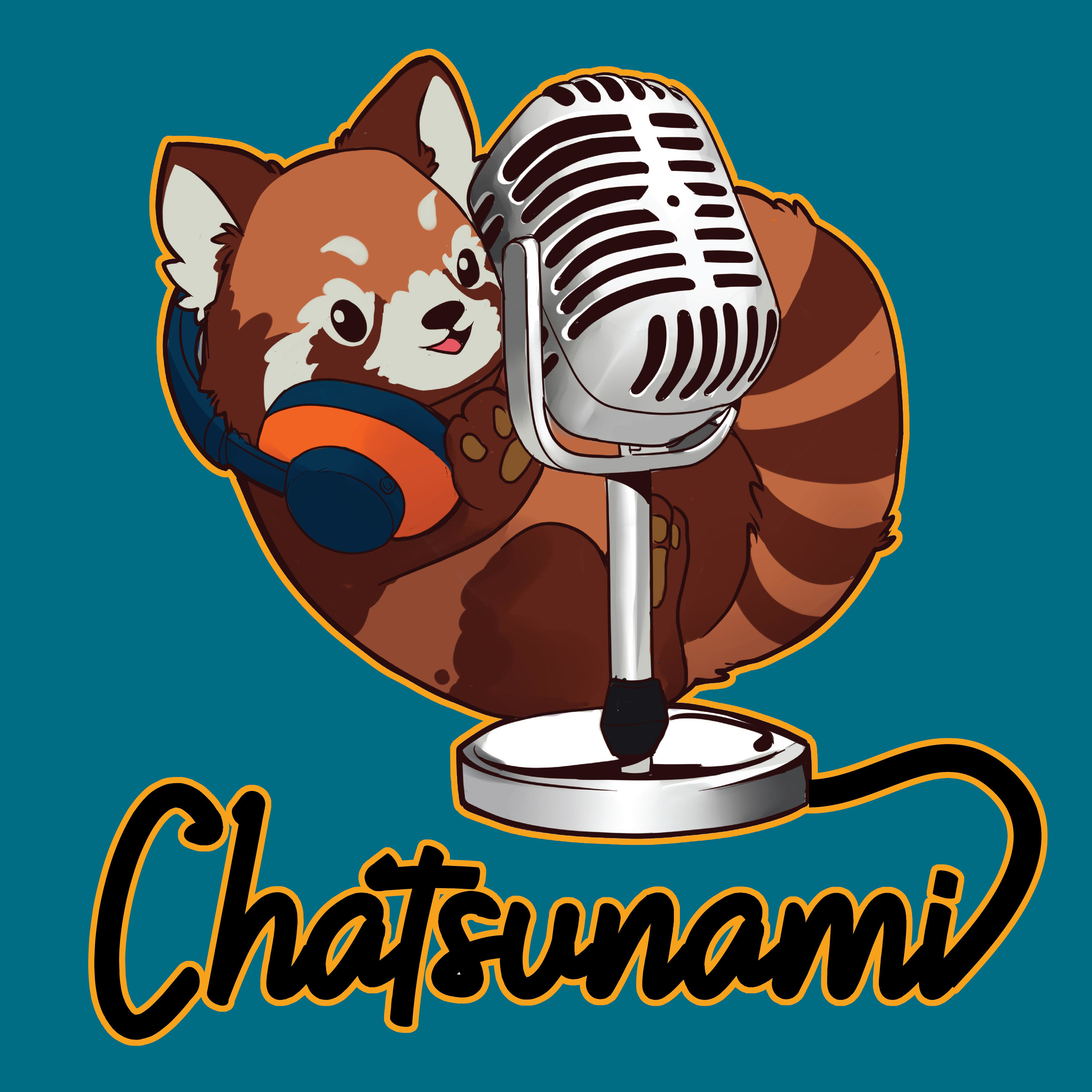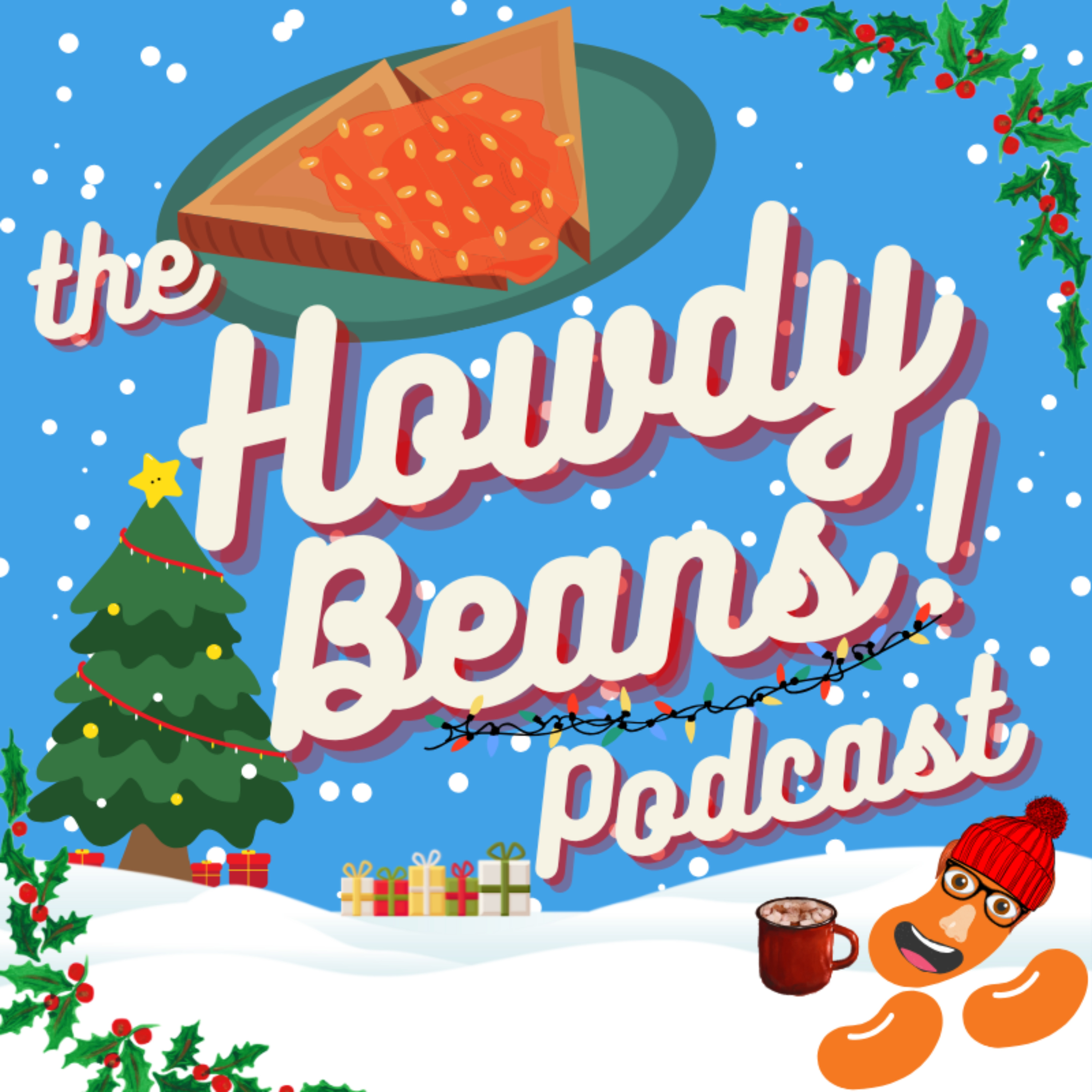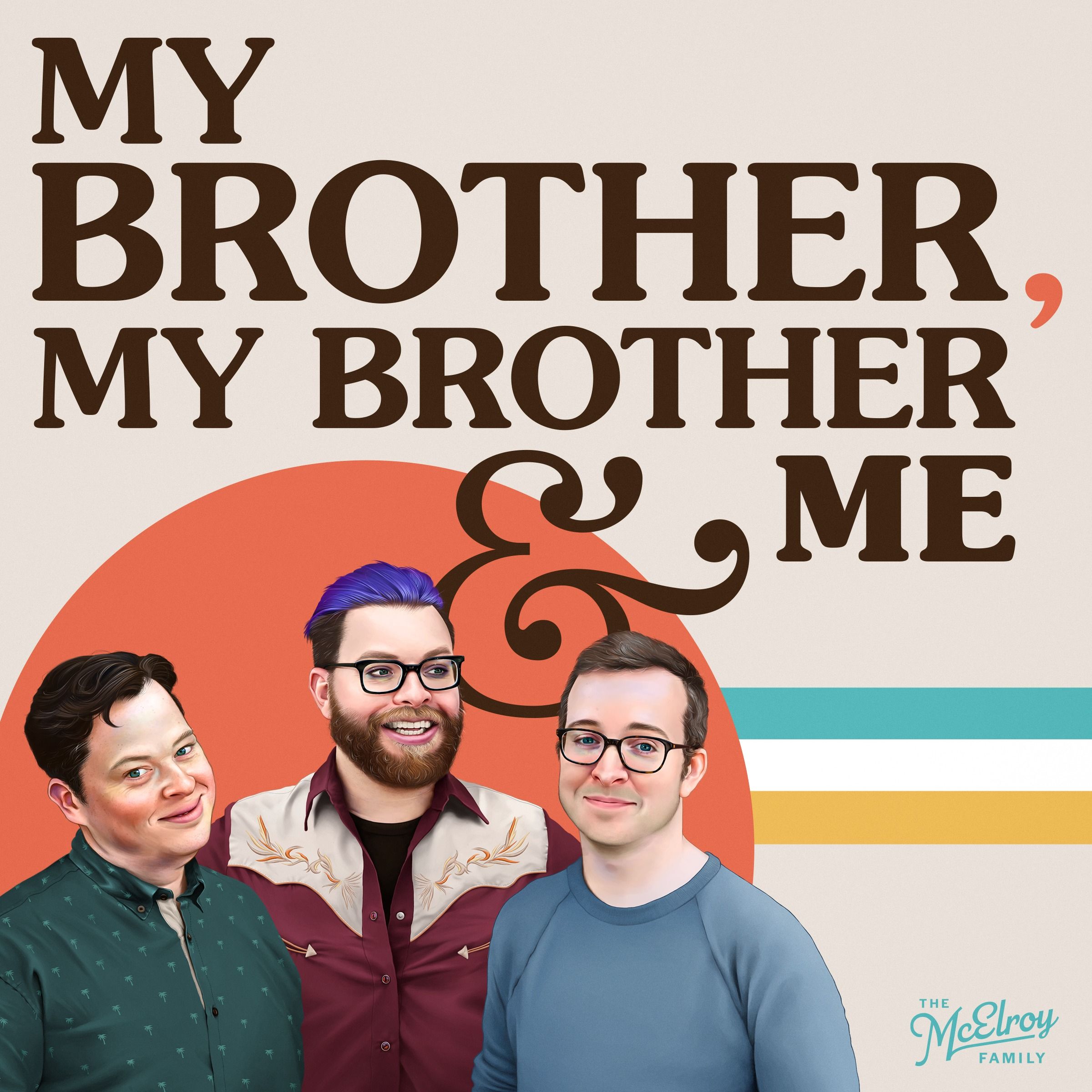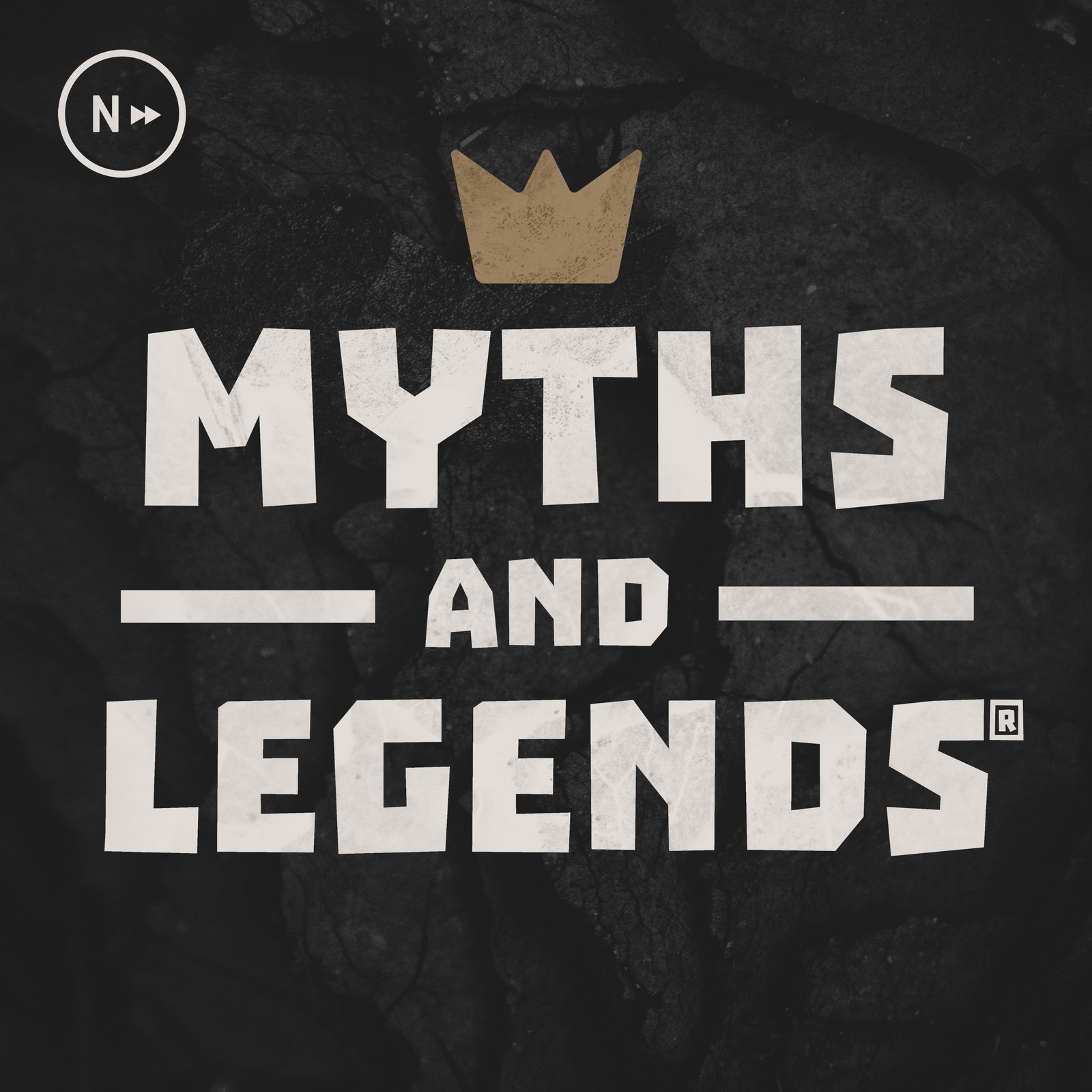
Myth Monsters
A bite sized look into the monsters of global folklore, cryptozoology and mythology with your host, Erin. Jump in and learn about your favourite monsters from Gorgons to Kelpies, to Wendigos to Bigfoot. Stay spooky every Thursday with a new episode with a new monster from another culture. Get in touch on Twitter at @mythmonsterspod
Myth Monsters
Fylgja
For this week’s episode, we’re heading over to the Nordic Isles for something a little spooky, but also a bit nice and looking at the ethereal Fylgja! How can you tell the difference between this monster and their evil counterpart? What was the first animal to cross YOUR placenta, and why does that relate? Find out this week!
You can find us on:
Social media:
INTRO:
Hello and welcome to Myth Monsters, my name is Erin and I’ll be your host for these little snack bite size podcasts on folklore and mythical monsters from around the world.
These podcasts focus on the actual cryptids, folklore and mythic monsters from global mythology, rather than focusing on full stories of heroes and their big adventures.
I’ll also be dropping in some references that they have to recent culture and where you can see these represented in modern day content so you can learn more, and get as obsessed as I am about these absolute legends of the mythological world.
I hope you’re enjoying the sunshine - I managed to get out this week and threw a hen party for my best pal in Oxfordshire and saw Gary Barlow from Take That by accident which was great. If you don’t know who I’m talking about, you are missing out on one of the greatest boy bands of all time and I recommend you go listen to Relight My Fire immediately instead of this podcast. But then come back please.
DESCRIPTION:
Moving slightly on from the 90’s British pop scene, we’re going north and heading into Scandinavia for a peaceful and guardian-type monster, the Fylgja from Norse mythology.
The Fylgja is typically described as a spirit, and can have a variation of forms - so I’ll get into the most common straight off. The most common is that of a beautiful woman, which can sometimes be your own mum or another woman you know, they look completely identical, however, you wouldn’t be able to figure out who it reminds you of. The next common is that of a dog or wild hound, which is usually white in colour and large in size.
The other most common is that of a predator animal, such as a fox, wolf, bear or even birds of prey, which is meant to reflect your true nature.
Last note on their appearance, but they can also appear as a ball of flame like a Will-O-Wisp, but the flame is only for looks and cannot physically hurt you. Importantly though, these forms, no matter which one, will ALWAYS be female - they are an exclusive lady monster.
The Fylgja are in the most basic of terms, a spiritual guardian. They look out for you on a constant basis throughout your life all the way up to your death - so they’re really just your watcher in the wings.
However, the most important thing with this monster is that they only usually come to you in dreams - so considering dreams can’t typically hurt or touch you anyway, you’re safe from any poking or prodding. Don’t worry though, they are completely benevolent, and are usually referred to as your spiritual twin, guardian or shadow-self and are more than likely just looking out for you.
They also tend to only show up before a big life moment, especially your death which also gives them a reputation of being an omen. The Fylgja are sometimes known to branch out of dreams and appear in the night, however, will only appear as a spirit and usually as a disembodied form of one of your enemies - so that’s nice I guess, super comforting. But if you do see one in the flesh, that is when you are getting a full blown omen of your upcoming death, but they can also show you this in your dreams too. In this regard, they’re often related heavily to fate and are watchers, rather than participants in your life events.
The Fylgja cannot act on their own and cannot change, as they are simply a reflection of the person they are attached to. They have been linked to warriors being able to transform or shapeshift into these animal forms in a last stand in some epic poems though, so they can also help you out if you’re really in dire need.
It is said though, that if a Fylgja strays from its original host, it will visit the dreams of others and become a Marr or Mare in English - which is a literal mythical embodiment of a nightmare and a very bad omen. It’s a whole other monster within a lot of European mythologies, I’ve covered it within my Night Hags episode if you want to hear more.
So why are there different types and variations of them? There are a couple of beliefs with this. The first is that Fylgja were very often linked to clans, and some are thought to look after whole clans rather than one specific person. If they do, they are usually represented by a woman or a totemic animal of that clan e.g. if they’re the White Wolves or something, it would be a white wolf for instance.
There’s also a belief that this actually links back to placenta. Yep, you heard me, afterbirth. It’s believed that everyone has a spiritual connection to their placenta, and based on what happened to your placenta after birth, you would have a different form of Fylgja.
If your placenta was buried, which was traditional and still is in some places, then the first thing to cross it would be your Fylgja’s form. This could be your mother, and some women would actively bury them under the threshold of their homes to ensure this, but it could also be found by predatory or carrion animals - so it could even be a ferret or a cat or a mouse for instance, as well as a bear or wolf. It was also quite traditional to burn your placenta, which is where you would have the flame Fylgja instead.
Lastly, in some beliefs, if you get an animal form, it’s believed that it's because you are linked to that animal through your values. If you have a fox, you are clever, cunning and tricksy. A bear means you are powerful and ferocious, a wolf is linked to warriors, danger and the wilderness, the ox to strength and endurance and an eagle or raven is linked to spiritual insight - specifically to Odin, the god king of the Norse pantheon himself.
ORIGIN:
Moving onto their etymology, it’s SUPER interesting this week. The word Fylgja is actually old Norse, and it means to accompany or follower originally, however, in English, it literally translates to fetch. This is super important because in Irish mythology, there is a monster called Fetch, which we probably won’t cover - but is very similar to the German Doppelganger for good reason as you can imagine.
Interestingly though, Fylgja has another meaning, in Icelandic, it means afterbirth or caul and based on what I told you about their origin earlier - you can now see why this all makes sense and links back together.
So the history of these monsters goes back to about the 15th century, between 1400 and 1501 AD, and we know this because they were written about in the Icelandic sagas. Sagas are really common within the Nordic mythology space, as they were great tales of heroes, gods and monsters, and the Icelandic sagas are some of the most famous ones.
Whilst I did note that this monster is from Norse mythology, most of the sources of this myth actually come purely from Iceland - so you might say that this is an Icelandic monster, but it’s written into Norse mythology, so it’s a good umbrella. But Icelanders out there, I got you.
I do have some stories from these sagas that I can share though, including the most relevant from the Gisla saga. In this story, the hero, Gisla Surrson, was visited by two Fylgja, where one represented the good and the other, the bad, trying to convince him to act violently once he woke up. Sometimes this is believed to be two different monsters, the Dis and the Hamingja, also monsters linked with Fate within the Norse monster mythos.
In another story, the hero, Ingolfr Þorsteinsson saw a red horse in his dreams, which he considered a good omen. However, his wife disagreed and believed that the horse was actually a Marr. She believed that the red horse represented bloodshed and bloody mindedness, and begged him not to meet with the other leaders of their village to decide on who was going to be chieftain the next day. He ignored her, was elected, but then was very literally, immediately assassinated.
Now in reality, dreams are very often linked to spirituality and the supernatural, as it’s a state we 100% cannot control, other than if you believe in lucid dreaming I suppose. Throughout mythology across the world, dreaming is a spiritual state and is often a place that is rife with omens, prophecy and magic. Dreaming, nightmares and generally sleeping is a vulnerable, but essential time for all living creatures, and so it’s easy for good or bad things to sneak up on you.
Moving over to other mythical creatures that are similar, I mentioned the Marr and the Dis earlier. The Marr is the embodiment of nightmares within Norse myth, but is often represented as a physical being, much like the red horse in the saga story. The Dis on the other hand, are very similar to the Greek figures of Fate, and are the protective spirits of Norse clans - so you can see why they are mistaken and super familiar to the Fylgja. I’ve covered both of these in their own episodes if you want more information, the Dis one is one of my favourites!
In this sleepy/spirit category, we also have the Hamingja, who were again, guardian spirits, but they looked after a person’s luck and happiness through life and would pass on that prosperity to their family after death as it accrues over a lifetime within the Norse belief. They also typically turned up as an animal, so there’s that similarity too - they’re considered the closest thing to a Fylgja within the mythology space.
The Fylgja are also often linked to the Draugr, the undead zombie-like monsters of Norse mythology, not because the Fylgja are zombies, but because they are protective spirits, but they do tend to just look after buried treasure and they technically have corporeal bodies. There’s also the Fetch, which we discussed earlier briefly. It's an Irish myth monster who is a double of their living person, but they are usually taken as a bad omen of death.
Lastly, we have the Daimon, which if you’ve heard through His Dark Materials, is similar within Greek mythology. They act as spiritual familiars to every person and were considered lesser divinities. Typically they were spirit guides and were souls of the great men of the Golden age of Greece, and were sometimes in animal forms, but more often in their human form.
CULTURAL SIGNIFICANCE:
Now onto modern media, if you haven’t guessed already, have absolutely nothing on the Fylgja specifically, however, we do have a bunch of guardian spirit media - so here’s a taste of some shows, movies and games you can look at for inspo here.
For art, I really struggled to find anything for this monster from a while back, but there are a few bits you can find from independent artists this week - so I’d recommend having a look through your deviantarts and such for some gorgeous pieces around them.
In movies, we have; The Guardian Brothers, The Golden Compass, Mulan, The Frighteners, 13 Ghosts, Coco, Ratatouille, The Babadook, Moana, The Others, Star Wars, The Sixth Sense, Pocahontas, Frozen 2, Haunted Mansion, City of Angels, The Lion King & The Conjuring.
For TV, we have; The Haunting of Hill House, His Dark Materials, Charmed, The Twilight Zone, Ghosts, Lockwood and Co, Being Human, The Living and The Dead, Misfits, Ghost Whisperer, Ultraman, Gargoyles, My Little Pony ‘n’ Friends, He-man and the Masters of the Universe & Pocket Dragon Adventures.
In video games, we have ones such as; Shin Megami Tensei, Pokemon, Fate/Grand Order, Persona, Town of Salem, Kingdom Hearts, Gigantic, Silhouette Mirage, Legend of Zelda, Jade Empire, Deadly Premonition, Guilty Gear, Beyond: Two Souls, Baten Kaitos, Inazuma Eleven, Mind Zero, World of Warcraft, Warcraft, Terrordrome the Game: Rise of the Boogeymen, Shuyan Saga & Tokyo Tattoo Girls.
My book recommendation this week is for The Norse Myths: A Guide to the Gods and Heroes by Carolyne Larrington for a great summary of Norse myths. Or for more ghostly goings on, Ghosts, Trolls and the Hidden People: An Anthology of Icelandic Folk Legends by by Dagrún Ósk Jónsdóttir or A Guide To Ghosts & Spirits From Folklore and Mythology Around the World by David McGill. The former being more specifically Icelandic, but including a lot of Norse ones too!
DO I THINK THEY EXISTED?
Now it’s time for, do I think they existed?
I’m actually super on the fence with this one because they’re kind of ghost, kind of a spirit and they’re also only seen in your sleep - so it makes them super hard to prove or disprove either way. I have weird dreams, including a specific maggot dream every summer because it’s my biggest pet peeve to wake up to in my cats food bowls honestly, so who am I to judge what people dream about?
I honestly hope my Fylgja isn’t a maggot queen, but I am also pretty sure, and this is a TMI, that my parents chucked my placenta in the bin - so I guess the first thing that passed mine would be a bin woman? I’ll take it, at least she knows trash when she sees it.
But this monster has an almost maternal but certainly ethereal air to it. I love the idea of having a guardian animal or person linked to you from birth, through birth, who guards you throughout your life and just keeps an eye on you in your sleep - I think that’s pretty cool.
When I was researching this one, I actually thought this monster was specific to a certain Scandinavian country, I thought they were Swedish actually - but it seems that all of the Scandi countries had this belief at some point due to the Nordic influence from the Vikings, which makes the idea even better because the concept of Bjorn the big Viking having a mouse looking after him in his sleep is hilarious to me.
But what do you think? Did the Fylgja stalk the sleep of vikings across Scandinavia? Let me know on social media!
OUTRO:
I underestimated how much I would enjoy covering this monster, the connection to birth is a super interesting concept and not one I’ve seen before in any of our other monsters - so I hope you enjoyed this as much as I did.
Next week, we’re heading over to the beautiful Brazil for a forest trickster and protector. Keep an eye out for backwards facing footprints with me for the Curupira next week!
For now, thank you so much for listening, it’s been an absolute pleasure. If you enjoyed this podcast, please give it a rating on the service you’re listening on - I’ve got loads of social media for any questions, or suggestions on what monsters to cover next and I’d love to hear from you. The social media handles for Tiktok, YouTube and Instagram are mythmonsterspodcast, and twitter is mythmonsterspod and I’m now also on BlueSky under mythmonsters. But all of our content can be found at mythmonsters.co.uk, and you can also find us on Goodpods, Buymeacoffee and Patreon if you want to help me fund the podcast too.
Come join the fun though and share this with your pals, they might love me as much as you do.
But for now, stay spooky and I’ll see you later babes.
Podcasts we love
Check out these other fine podcasts recommended by us, not an algorithm.

FolkLands
Tim Downie, Justin Chubb
Chatsunami
Satsunami
The Howdy Beans Podcast!
Luke The Elder Bean!
My Brother, My Brother And Me
The McElroys
Myths and Legends
Jason Weiser, Carissa Weiser, Nextpod
Lore
Aaron Mahnke
Exploration: Dreamland
Exploration: Dreamland
The Neatcast
Jeremy, Zack, Mike
Effin' Cultured
Bobby, Griff, and The Rik
